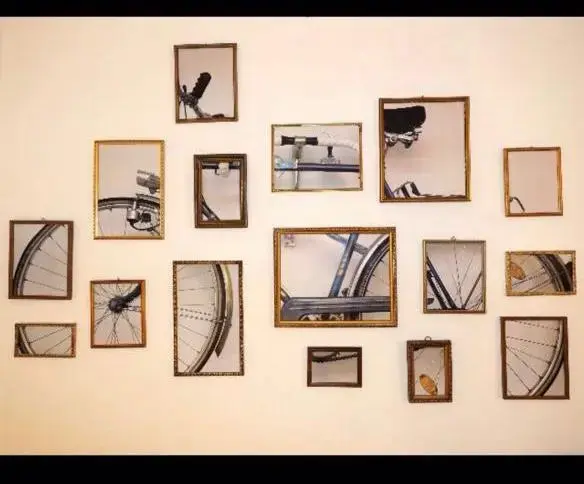Interesting project
there may be multiple paths to achieve this.
The one I would choose is:
Determine the overall dimensions of the 'image" This will guide the number of photos(s) required to achieve the required pixel count for high quality printing. I would go with finished resolution of 300dpi min. That way a close inspection should not disappoint.
Once that is determined, then take the required number of photos using a tripod-mounted camera, set back and zoomed in to avoid any distortions. Also allow for plenty of overlap for each image.
Assemble the images into one in the software and then save portions of the image using the required final dimensions, applying bleed marks to fit the frame
Then get each image printed and framed. Might be cheaper to find premade frames in a variety of sizes and then get the images printed and then trim to the required size.
I would also get the final print at full size printed using a black and white plan printer (multiple abutting images if necessary). This is the cheapest print available. Temporary tape the black and white print to the wall to guide final image placement. You also need to allow for the drop depending on the hanging system of each frame. Test elsewhere, measure the drop and use that before installing the mounting point.
The wall colour should also be taken into account. Ideally the bike would be suspended against the finished wall using the lighting (natural or artificial) when it would be normally viewed. This way it promotes the impression of being hung.
There are a few things in that image I wouldn't do or focus attention on, but then I am a cyclist. Or great if you want to start a conversation amongst cyclists about what they would do differently!
Here is the link to one photo I took. It required multiple images, overlapped. However our weight restrictions meant no tripod, and given the remoteness of the location, it was unlikely I would return. Once assembled I sliced it up to about 20 individual A3 size images, had them printed. To show the image, I lay them on the floor, abutting adjacent prints. That way the viewer can see the scale of "the roof of the world".
Make sure you scroll across.
https://live.staticflickr.com/8401/8932981435_68c8a6ba46_o.jpgThe original image is much crisper, not the jpeg compressed image seen.
